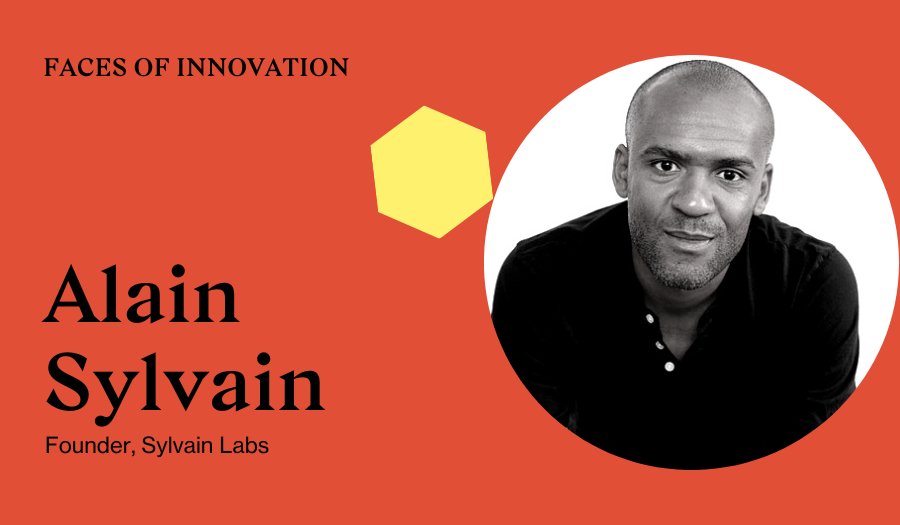Two weeks ago we spoke to Sylvain Labs Founder, Alain Sylvain, and explored a range of different topics, from adapting to the new way of work to how businesses should be thinking about diversity and inclusion. It was an incredibly insightful interview and great to get Alain's thoughts and perspectives on some challenging subjects. We learnt a lot and below is a transcript of the interview.
Sylvain Labs is a strategy and design consultancy that provokes progress for companies, people and society at large.
Alex: Thanks for joining us Alain. There’s a few different topics that I wanted to cover, from hearing more about your background through to your perspectives on a lot of what we’re experiencing in 2020.
To kick off, it’d be great to hear a bit more about your story – how did your career start and what led you to launch and create Sylvain Labs?
Alain: Thanks for including me in this. To give you some background on my story, I studied Politics and International Affairs in college, but ended up finding a home after at an agency called Mother. I loved it there and I was very close to the people. I didn’t, as a strategy person, feel as though I was at the core of what that company was selling. Good craft of creativity was what Mother was manufacturing, so to speak, and as a strategist I was sort of second to and in service to that, and I wanted to be somewhere that I could be more central. And so, I made a decision to never work for a creative agency again, and I was recruited by another consulting company called Redscout.
I was Managing Director there and appreciated the nature of the work in innovation and strategy, but I didn’t fully connect with the company or the culture or the vibe. I knew that perhaps there was an opportunity to create a business that was one-part Mother – with the creative spirit, casual energy and integrity - and one part Redscout, where assignments were rigorous and more upstream. And that’s what Sylvain Labs was really meant to be, a sort of marriage of Mother and Redscout.
Alex: That’s interesting. I hadn’t realized that one of the catalysts was essentially merging two very different perspectives and approaches to creativity, brand, and innovation specifically. You were coming into the marketplace at a time where it felt like there was a lot of growth, but also a lot of competition, particularly in the brand and innovation space.
How did you gain traction in the market? And is there a particular and memorable challenge that you faced in the early days of founding the business.
Alain: Yes, it was. The company was founded in January 2010 and that was right after the recession, so it was a very strange time to start a company. But we found traction by putting human relationships at the heart of the business. I had a couple of really strong relationships that I could count on and convert into clients, and that continues to this day.
In terms of memorable challenges, there were numerous. 10 years ago, innovation consulting actually wasn’t as mature as you might think. There were a few similar companies founded around the same time but this new generation of innovation consultants that we know today really are within 5 and 10 years old. And so, we really didn’t have a clear idea of what the singular thing we were doing was. We even struggle with that a little bit to this day because it’s hard to talk about how we do brand strategy and innovation differently, since they’re so intertwined.
We really took on all sorts of challenges in the early days and worked on all sorts of categories. We did some cool projects for Google, but we also did some crazy, left- field projects. You’d be surprised to hear we worked on a lunch meat project and then a B2B cable telecommunications platform! Just a really bizarre mix of work, which ultimately, as challenging as it was in the moment to stretch from one industry or service to another, actually really helped us develop a broader set of tools and perspective that informed our work moving forward.
So, the challenge was we were pulled in tons of directions, but looking back, it’s probably the best thing that happened.
Companies that invest in things like R&D, innovation and marketing actually outperform their competitors by a significant margin ...The smart companies know this are looking to increase their innovation expenditures and the role of innovation is more prevalent and should be more prevalent at times like this.
Alex: Staying on the challenge topic, 2020 has definitely had no shortage of challenges! Being based in both Europe and the US, have you noticed a difference in how the brand and innovation industry has been impacted in both regions, or even in the type of briefs or questions that clients are posing? From my perspective I’ve always found the US to be a bit more comfortable with risk than Europe.
Alain: There’s a great HBR article called Roaring Out of a Recession and it was released after the 2008 recession, and it’s about how companies should invest in both offensive and defensive strategies in moments of crisis. A lot of companies tend to flee and cut staff or cut expenditures, when actually this is the time to invest, and the companies that invest in things like R&D, innovation and marketing actually outperform their competitors by a significant margin, something around the 36% mark.
The smart companies know this and are looking to increase their innovation expenditures and the role of innovation is more prevalent and should be more prevalent at times like this. I’m not just saying this as someone that sells this service, but truly, there’s factual data to support it.
In terms of difference across regions, what we’re finding in the US is that there is a real reticence on the part of most clients to spend. But there are a few categories where we’re seeing some real energy. For us, the only category that we’ve gained new clients is really what you might call the digital space. We’re working with a handful of these unicorns, which says something about how humans and the economy are working right now. A lot of people are doing many things online and at home, expecting things like delivery and streaming video, and those businesses are feeling a bit more open to spend on innovation. But at the same time, we are also getting some very, very far out whitespace innovation projects among more traditional companies that are not spending for tomorrow.
In Europe I too have noticed a greater risk aversion and I don’t really see a significant move one way or another. Brands are staying very quiet and have a ‘wait and see’ approach, and frankly, I think they’re following a lot of what’s happening in the US.
Alex: That’s super helpful. I think that links into economies bouncing back and how quickly they bounce back post-pandemic. In the US, if innovation investment stays consistent or increases, businesses are presumably able to adapt a little bit faster, whereas in Europe, it feels a lot more protectionist with budgets being reduced. Overall it doesn’t feel as though a lot of companies are adapting as quickly there as they are in the US.
Switching the conversation to diversity and inclusion, which has been another major subject of 2020, whether it’s related to the workforce or brands or society in general, I was particularly keen to get your perspective both as a black business owner yourself and as an innovation and brand leader in this space.
There’s a lot of articles that have come up in recent years on the lack of diversity and inclusion in the brand and innovation space but what’s your view on the industry and some of the challenges in faces around encouraging more diversity and more inclusion?
Alain: There’s a lot there. First it’s a challenging thing to opine about for me because what we’re trying to do at Sylvain Labs is to be the best consultancy in the world and we’ve done a good job of that – we’ve worked on very diverse challenges at the highest level and really the only thing that provides us a credible voice on this issue is the fact that the owner, and the person that runs it, is a Black man.
So it’s an interesting tension because, on the one hand, we should be evaluated the same way and be asked the same questions as any other consultancy might.But I also see it as a responsibility and a unique position where we do have some expertise on this. There’s an absolute void of “diversity” in brand innovation roles at companies and consultancies, which is a travesty because people are creating brands and innovating products for people that feel very different to them and there’s a complete disconnect.
I have mobile technology on the brain right now because of a client project and African Americans over-index on mobile technology by a significant margin over the general population. When you look at the people designing these mobile products with these devices and apps in the Bay Area there’s a tremendous disconnect. So, what value could you bring people if you reflected them better in the actual development of the product? What value could you bring your company if you were able to better deliver value to the customer? To me, it’s in the business case. There’s a clear business argument for diversity and inclusion. We try to elevate that among our clients as much as possible, but systemic racism is real and it’s a hard thing to push forward.
You started the question by saying, everyone’s talking about diversity and yes, some people are, but a lot of us have been talking about it forever. A lot of us were activated well before the killing of George Floyd and a lot of us will be activated well after. In corporate America and in some circles, this has now become a priority, which says something right? Why does it take another black man to be tortured for this to become a priority?
What I feel the real ask is, is how do we better reflect the market? How can we tap into a greater sense of creative diversity, not only racial, but creative diversity?
Alex: I think the part to emphasize is that many companies are reacting to pressure in order to change certain elements around their brand and their identity but there’s obviously a significant amount of systems and cultures and leadership structures that need to be looked at too and it’s a slow process in many ways.
Thinking about it from a brand strategy and communications perspective, what do you think has been missing from the way that brands have responded to the Black Lives Matter movement? Obviously, many have looked at their own external communications, but have they done enough internally? Should they be starting internal before going external? Do you think that companies have been missing something when it comes to that sort of reactive push to show support or to create change?
Alain: It’s a good question. Action should be authentic to who the leaders are. And if it’s a reaction then that’s not an authentic response to who they are, that’s an authentic response to what’s happening in the market. What’s key is that it needs to be authentic and it needs to be inherent. It needs to be a belief of the organization at the very top and then, again, there’s a business case for that. If that’s true and if it’s a really an authentic strain of the DNA of the organization, there should be a real reconstitution of the leadership structure and incentive structure of the organization. If it’s a priority then you would compensate people differently, you would talk to your investors differently.
In my observation, I’ve noticed five types of reactions to the collective attention right now on police brutality and the BLM movement. The first reaction is silence, brands trying to honor the moment by “going dark”, conscious of “piling on”. But silence and distance is complicity and ambivalence. Or they make a statement, some kind of declaration that doesn’t mean much - like the black squares on Instagram. These can come off as tone-deaf and temporal, especially when they’re back to business as usual on social the next day.
We’re also seeing some companies take action through things like donations or giving employees time off on Juneteenth, or there are more enduring actions like setting diversity quotas or committing to real behavior change at every level. But there’s nothing like elevating your commitment to a core strategic priority, one that spurs on a reconstitution of your values - the literal rewiring of the internal DNA of the organization and business practices. This is the authentic response that differentiates the brands and leaders that really know who they are at the core. Anything else is just a reaction to the moment.
Alex: That makes a lot of sense. I guess one of the aspects for a lot of companies is whether they do have diverse leadership and whether they have an authentic and inclusive culture, and one that encourages a sense of belonging. From what you’re saying it starts with essentially building a business that does reflect the market and society that they serve, as well as the products and services that they offer, and who their customers are.
I’d like to expand into the subject of talent. At a recent event that we ran you spoke about the phrase ‘diverse talent’ and I wanted to explore this further with you. You talked about how it others People of Color and what we should be doing is prioritizing the best talent and also rethinking about how we communicate about ‘diverse talent’ as well; essentially it’s not about ‘diverse talent’, it’s about hiring the best talent in a way that reflects market opportunities. This made a lot of sense to me and it felt really clear in its purpose and authenticity.
But how do large organizations rewire the way that they approach this language? How do they move away from being metrics-based or focusing on box-ticking when it comes to encouraging more diversity in their organizations?
Alain: What I feel the real ask is, is how do we better reflect the market? How can we tap into a greater sense of creative diversity, not only racial, but creative diversity? So, develop better ideas because there is a business case for “diversity”. And that’s where the motivation should come from and that will change things. At the event when it was mentioned that we need to take care of diverse talent and give them a space to thrive it felt as though we were otherizing them, like they’re rambunctious children.
With corporates, the box-checking and the metrics are useful as it can hold people accountable, and when you have that kind of scale, you need systems. Those more technical and tactical approaches to recruitment are important and useful, and I advocate for those things. But I think the bigger point is changing the White gaze on terms like ‘diversity’ and ‘inclusion’.
To go a step further, and if you look at the creative economy right now, or if you look at pop culture, or music, language, fashion, the most successful creative endeavors are made by people that would fit in that category of ‘diverse talent’. The most influential on the mainstream are actually ‘diverse’. What does it mean when we consider the most influential populations as outsiders?



